
July 13th, 2019, I arrived at North Las Vegas. My 140 was not flown since last October. But the battery was new, the alternator repaired and the aircraft had a fresh annual. The plan was to meet my family in Florida in a week. I decided to fly alone (without Anna), because I was uncertain about the 140's performance when crossing the Rockys and wanted to stay as light as possible. Geary, owner of another 140 in North Las Vegas, helped me with some hints (and brake fluid). July 15th, 4:30 AM, I left Las Vegas.
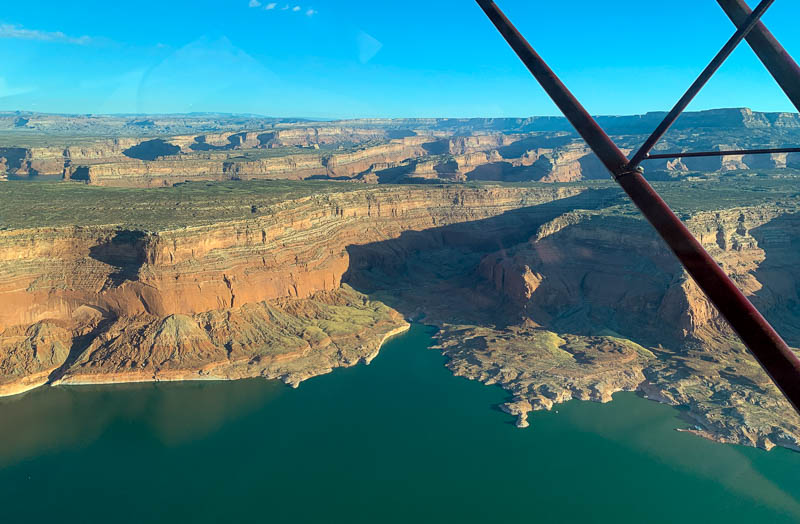
I decided to fly north of the Grand Canyon, roughly along the border between Arizona and Utah. The landscape is breathtaking: Picture above shows lake Powell, after fuel stops in Perkins (U08) and Page (PGA).
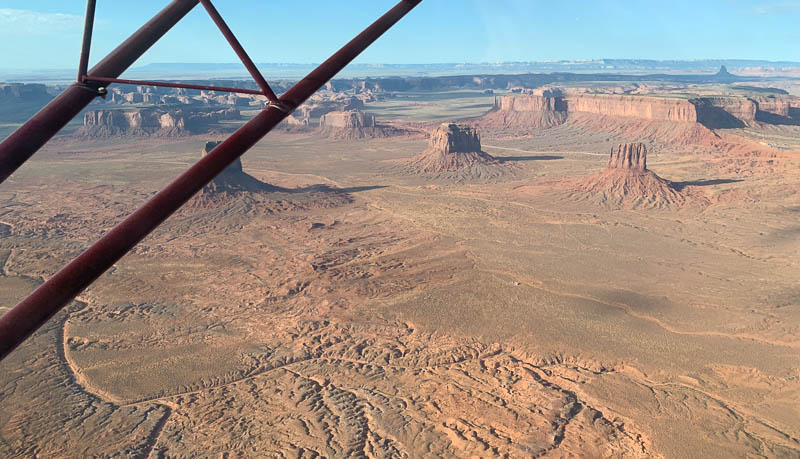
Monument Valley, half way between Page and Farmington (KFMN)
After a few hours of flying eastbound, in Farmington Four Courners, a ramp agent pointed out that there is oil on the tail wheel. I was too inexperienced to notice it myself. But I did note, that the engine oil level was dangerously low. I had a massive oil leak. A mechanic at Bode Aviation took a look.
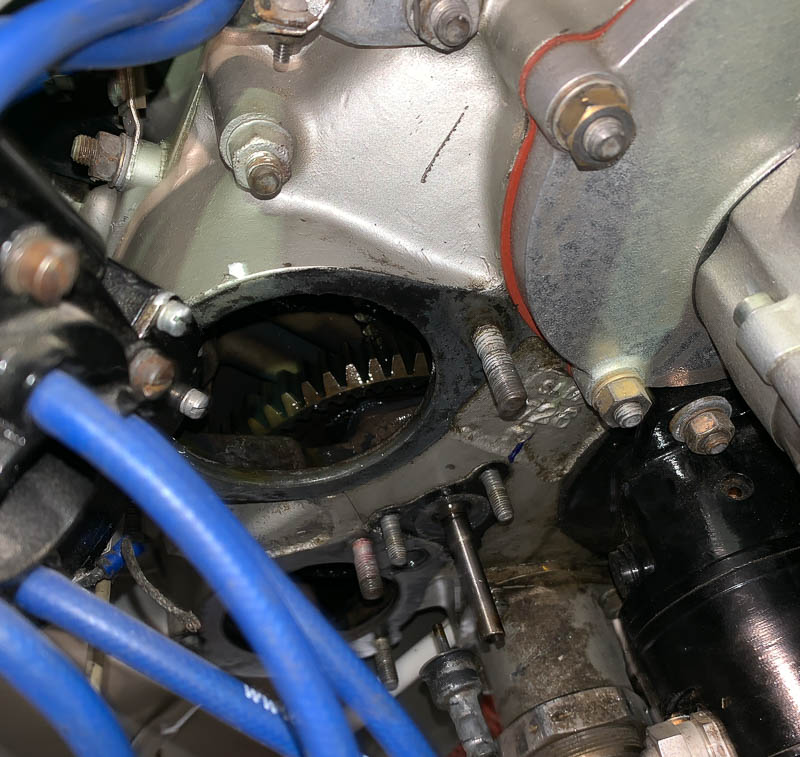
He removed the (just overhauled) generator ...

... and identified a defective seal as the cause of the oil leak. He replaced the seal. Fixed! Glad, the previous flight wasn't longer. The engine would have run out of oil.
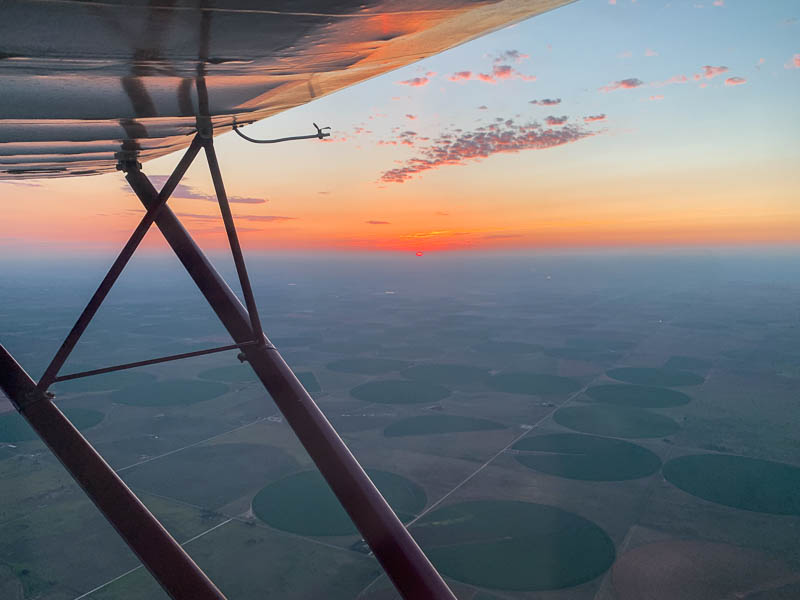
Crossing the mountains in the summer means takeoff before sunrise. Farmington has an elevation of 5500 ft and in the afternoons in July, the density altitude is often above 10.000 ft - way too much for our little plane. I always flew with full tanks (and never more than 2 hours), because at that time I didn't trust the fuel indicators, didn't use calibrated drip sticks and had little experience about fuel consumption. I tried to use only runways longer than the density altitude and as a rule-of-thumb, this worked well. After decades of calculating take of performance of airliners accurately (in the 1990s still with paper charts and since 2001 with the EFB), guessing obstacle clearances was suspicious for me. I used what we call the 5P-methodology: "Propper planning prevents poor performance". I always considered all available information, not only the official one like runway length, slope, preferred take off direction, AWOS, etc, but also sources like Google Earth and other pilot's comments found e.g. in Foreflight. Experience slowly grows with every take off. Luckily, there was never a performance critical take off and luckily, my engine's RPM never dropped below what it is expected to deliver.

Clouds and visibility are typically not a big issue in the Southwest. In fact, I didn't see many clouds until east of the Mississippi. Thunderstorms and turbulence weren't issue as well; mainly, because I only flew in the morning.
In western Texas, crosswinds became an issue. As mentioned in Thomas Horne's book "Flying in America's weather", the winds pick up, once you come down from the New Mexico high desert. I have landed airliners up to 35 knots cross wind, but the outlook of having to land my 140 in a 10 knot crosswind initially scared me, because even calm wind landings at first needed all of my little tailwheel landing skills (and often the major part of the runway widths). More than once I waited a few hours or called it a day, because I considered the winds being too strong for me.
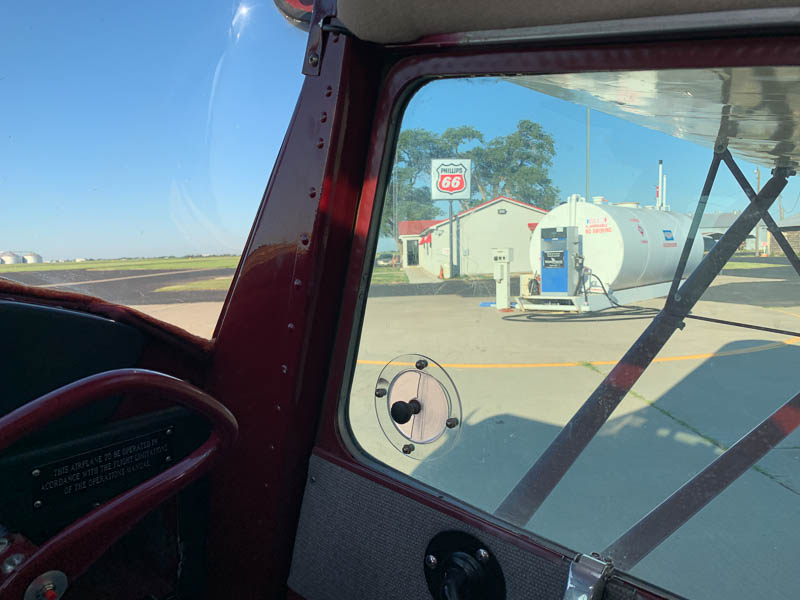
I am not afraid of flying to larger airports, but I learned that it is better to avoid them. Fuelstops are quicker and tiedown fees lower at small airports. I never called the FBO in advance, because I never knew in the morning, where I would end-up for the night. After having crossed the mountains, my main consideration when selecting airports for overnight stops was the distance I would have to walk from the airport to the next motel. I am impressed by the courtesy car system, and used it more than once, but I never relied on it. All my overnight gear fits into a small backpack and most of the time I had to walk less then 30 minutes.

I spent all of my nights in towns I have never been before and never heard of. As my Cessna was based in Las Vegas for nearly two years, I knew this unique city quite well. Due to my airline layovers I have been multiple times in most of the 10 largest US cities and during my initial pilot training at the Lufthansa flight school in Phoenix, I know Arizona quite well. Now I saw a lot of very rural places and met many friendly folks.
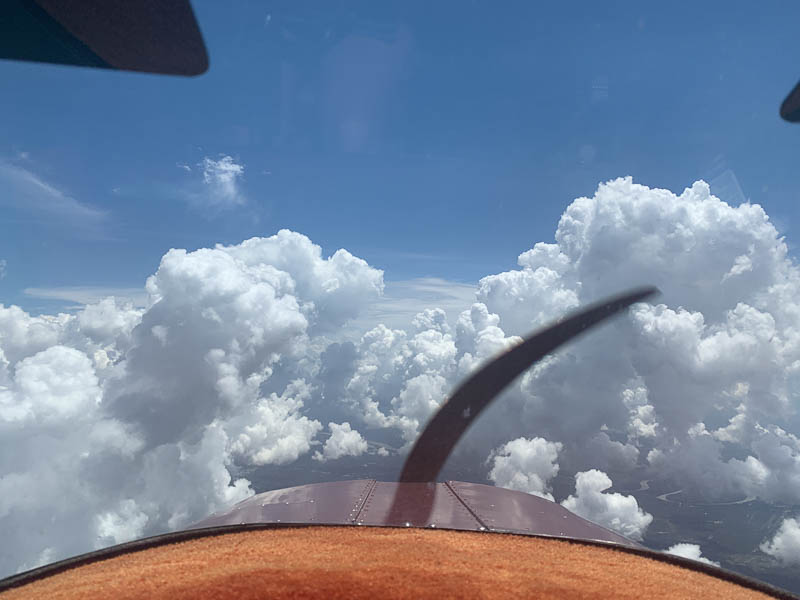
Since Texas, I flew also in the afternoon. In Alabama, I made my first contacts with thunderstorms. Thanks to my Stratus, I saw all the storms on my EFB. I tried to keep a respectful distance, but found out that this is not that easy and once I landed just minutes before a storm reached the airport. Friendly folks offered to place my 140 into an hangar during the storm. I offered to pay for this, but they didn't take any money. Great folks.

July 21st 2019, I reached my family in Florida and we went to the Kennedy Space Center, spending the day celebrating - together with millions of Americans - the 50th anniversary of the Apollo 11 moon landing.
After a few days at the beaches, we flew to Buenos Aires, while my 140 was parked in a hangar at Vero Beach.